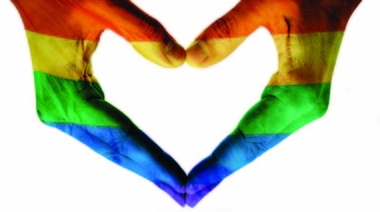Systems of erasure

by Emma Rose Kraus
Intern Journalist
This month is February and as many know, that means that it is Black History Month, a time when society takes special care to acknowledge the accomplishments and improvements made by an often overlooked and stigmatized part of our community.
It is usually acknowledged that the LGBTQ community is itself a minority group which faces oppression and silencing. It is not so often that we take the time to look at the oppression that happens within our own community to those of multiple minority status and the problems these groups within this larger whole face based especially on race.
“There have been some very notable black LGBTQIA members in society as a whole,” says Sheri Dickinson, director of Oklahoma’s Black Lives Matter. “In society our roles have not been defined by our orientation but inside the community our roles have been muted because there is an element that it is difficult to function within the LGBTQIA community as a person of color even today.”
Dickinson goes on to discuss the general feeling of being ostracized from the greater LGBTQ movement.
“For a very long time there has been an OKC Black Pride established just so that we can have a place where we feel we are going to be included.”
“The roles have been very minute,” states Dickinson, “We feel like we deal with ethnic erasure within the community.”
Ron Anderson (Candace Capri) notes that while being a person of color in the LGBT community is difficult, it is also difficult to be LGBTQ as a person of color.
“It’s not as accepted within the black community as it is within non-minority groups,” he says, “Not to say that it’s not accepting, but it depends on the demographic area you are in. In Kansas, where I live, there are some minority families that accept it. Personally speaking, my family did not.”
Dickinson notes the danger of being an out person of color, “Many people of color feel like they are going to be ostracized or lose connections in their own community or within families making it harder to come out or be an active, vocal member of the LGBT community.”
For some people of color, being LGBTQ is not even an option that is discussed, as Anderson reveals.
“The first I knew of homosexuality was I saw a picture in Life magazine. It was on the back page, and it was a group of guys at a Gay Pride parade in New York City,” says Anderson, remembering his first encounter with homosexuality. “They were three white men, they were in dresses and they had beards and I thought to be gay you had to dress like this all the time.”
Trying to get recognition within the LGBTQ community as minorities within a minority group is difficult, Dickinson states.
“It’s a battle,” she says, “Something that we’re still trying to overcome even today to [get to] where the LGBTQ community is totally inclusive.”
Dickinson reveals there are many ways white members of the community and allies could try to help in the realizing of a more inclusive LGBTQ community.
“Understand why this is a necessity and come and join and begin to learn things about our culture. Every African American person is their own individual self, so if you want to get to know somebody, invite them to dinner or to lunch; begin to break bread and say, ‘Hey, I want to know about you and I want you to know about me.’
“It is appropriate and it is necessary for people of color to take leading roles within the community if you really want inclusivity and diversity to really be celebrated as it should,” says Dickinson.
Dickinson also stresses that discussions surrounding race and erasure cannot be left behind when February ends.
“This is a conversation we need to be having until these problems are dispelled,” Dickinson affirms.
Copyright 2017 The Gayly – February 12, 2017 @ 11:45 a.m.





